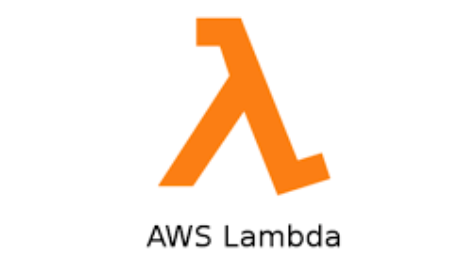
Welcome to our comprehensive guide to AWS Lambda interview questions. In this article, we will dive deep into the key concepts, best practices, and interview questions related to AWS Lambda, a serverless compute service offered by Amazon Web Services (AWS). Whether you are a beginner or an experienced professional preparing for an AWS Lambda interview, this guide will equip you with the knowledge and insights to excel. We will cover a wide range of topics, including Lambda basics, event sources, triggers, deployment, security, monitoring, and more. Let's get started!
Table of Contents
- AWS Lambda Overview
- Lambda Basics
- What is AWS Lambda?
- How does AWS Lambda work?
- Benefits of using AWS Lambda
- Lambda Event Sources and Triggers
- What are event sources in AWS Lambda?
- Types of event sources
- Configuring event sources and triggers
- Lambda Deployment
- Creating and configuring Lambda functions
- Lambda function versioning and aliases
- Lambda Security
- IAM roles and permissions
- Securing environment variables
- VPC configuration and security groups
- Lambda Monitoring and Logging
- CloudWatch integration
- Monitoring Lambda function metrics
- Lambda Best Practices
- Optimizing performance and cost
- Error handling and retries
- Testing and debugging Lambda functions
- Lambda Interview Questions
- Basic AWS Lambda Questions
- Scenario-based AWS Lambda Questions
- AWS Lambda Best Practice Questions
- Advanced AWS Lambda Questions
- Conclusion
1. AWS Lambda Overview
What is AWS Lambda?
AWS Lambda is a serverless computing service provided by Amazon Web Services (AWS). It allows you to run your code without provisioning or managing servers. With Lambda, you can execute your code in response to events and scale automatically based on the incoming request volume.
\How does AWS Lambda work?
When a triggering event occurs, such as an HTTP request or a change in an Amazon S3 bucket, Lambda automatically runs the code associated with the event. You only pay for the compute time consumed by your code, with no charges when it's not running.
Benefits of using AWS Lambda
- Serverless: Eliminates the need for server provisioning, maintenance, and scaling.
- Cost-effective: Pay only for the actual compute time used by your code.
- Automatic scaling: Automatically scales based on the incoming request volume.
- Event-driven: Executes code in response to events from various AWS services.
- Easy integrations: Seamlessly integrates with other AWS services.
- High availability: AWS Lambda handles all the operational aspects, ensuring high availability.
2. Lambda Basics
What is AWS Lambda?
AWS Lambda is a serverless computing service provided by Amazon Web Services (AWS) . It allows you to run your code without provisioning or managing servers. With Lambda, you can execute your code in response to events and scale automatically based on the incoming request volume.
How does AWS Lambda work?
When a triggering event occurs, such as an HTTP request or a change in an Amazon S3 bucket, Lambda automatically runs the code associated with the event. You only pay for the compute time consumed by your code, with no charges when it's not running.
Benefits of using AWS Lambda
- Serverless: Eliminates the need for server provisioning, maintenance, and scaling.
- Cost-effective: Pay only for the actual compute time used by your code.
- Automatic scaling: Automatically scales based on the incoming request volume.
- Event-driven: Executes code in response to events from various AWS services.
- Easy integrations: Seamlessly integrates with other AWS services.
- High availability: AWS Lambda handles all the operational aspects, ensuring high availability.
Lambda Event Sources and Triggers
What are event sources in AWS Lambda?
Event sources in AWS Lambda are the components or services that generate events that can trigger the execution of Lambda functions. They include various AWS services such as Amazon S3, Amazon DynamoDB, Amazon Kinesis, Amazon SQS, and more. Event sources allow you to create event-driven architectures, where your Lambda functions respond to events generated by these services.
Types of event sources
- Amazon S3: Trigger Lambda functions when objects are created, modified, or deleted in an S3 bucket.
- Amazon DynamoDB: Execute Lambda functions in response to changes in DynamoDB tables.
- Amazon Kinesis: Process streaming data from Kinesis streams with Lambda.
- Amazon SQS: Integrate Lambda with SQS to process messages from a queue.
- Amazon EventBridge: Use EventBridge to route events from various sources to Lambda functions.
Configuring event sources and triggers
To configure event sources and triggers for AWS Lambda functions, you can use the AWS Management Console, AWS Command Line Interface (CLI), or AWS SDKs. The process involves specifying the event source, defining the trigger conditions, and associating the Lambda function with the event source. You can also use Amazon EventBridge to create more complex event-driven architectures.
Lambda Deployment
Creating and configuring Lambda functions
To create a Lambda function, you can use the AWS Management Console or AWS CLI. During the creation process, you specify the runtime, handler function, and other settings. The handler function is the entry point for your code, which Lambda invokes when an event occurs. You can also define environment variables, resource requirements, and permissions for your Lambda function.
Lambda function versioning and aliases
AWS Lambda supports versioning and aliases, allowing you to manage different versions of your Lambda functions. Versioning enables you to publish multiple versions of a function, while aliases provide a way to point to a specific version or version using a human-readable name. This helps in managing different stages of development, testing, and production environments.
Lambda Security
IAM roles and permissions
AWS Identity and Access Management (IAM) allows you to control access to AWS resources, including Lambda functions. You can create IAM roles with specific permissions to grant access to other AWS services, such as S3 or DynamoDB, from within your Lambda function. By following the principle of least privilege, you can ensure that your functions have only the necessary permissions to perform their tasks.
Securing environment variables
Lambda allows you to store sensitive information, such as API keys or database credentials, as environment variables. These variables are encrypted and securely stored, reducing the risk of exposing sensitive information in your code. By utilizing environment variables, you can separate configuration details from your code, making it easier to manage and update sensitive information.
VPC configuration and security groups
If your Lambda function needs to access resources within a Virtual Private Cloud (VPC), you can configure it to run inside the VPC. This allows your function to access resources such as RDS databases or EC2 instances securely. By associating security groups with your Lambda function, you can control inbound and outbound traffic, enhancing the security of your application.
Lambda Monitoring and Logging
CloudWatch integration
AWS Lambda integrates with Amazon CloudWatch, a monitoring service that provides real-time insights into your Lambda functions. You can configure CloudWatch to collect and visualize metrics, set alarms based on predefined thresholds, and monitor the health of your functions. CloudWatch Logs captures logs generated by your Lambda functions, helping you troubleshoot issues and analyze execution behavior.
Monitoring Lambda function metrics
CloudWatch provides several metrics to monitor the performance and behavior of your Lambda functions. These include metrics such as invocation count, error count, duration, and throttling. By monitoring these metrics, you can identify performance bottlenecks, troubleshoot errors, and optimize the execution of your Lambda functions.
Lambda Best Practices
Optimizing performance and cost
- Use appropriate memory allocation: Adjust the memory allocation for your Lambda functions to optimize performance and cost. Higher memory allocation results in increased CPU and network resources, but also higher costs.
- Enable function concurrency: Configure the maximum concurrent executions for your Lambda functions to control the number of parallel invocations. This helps in managing resources and prevents performance degradation during high traffic periods.
- Optimize cold starts: Minimize the impact of cold starts by ensuring that your functions are warm or using provisioned concurrency. Warm functions have reduced startup time and improved performance.
Error handling and retries
- Implement error handling: Handle errors gracefully within your Lambda functions by implementing error handling mechanisms. This includes proper logging, exception handling, and returning meaningful error responses.
- Configure retries: Configure automatic retries for failed invocations to improve the reliability of your functions. You can specify the maximum number of retries and the backoff strategy to follow between retries.
Testing and debugging Lambda functions
- Unit testing: Write unit tests for your Lambda functions to validate their functionality and handle different scenarios. Use testing frameworks and tools specific to your chosen programming language.
- Local debugging: Use local development environments and tools to debug your Lambda functions before deploying them to AWS. This helps in identifying and fixing issues early in the development cycle.
Lambda Interview Questions
Basic AWS Lambda Questions
- What is AWS Lambda?
- How does AWS Lambda differ from traditional server-based computing?
- What are the benefits of using AWS Lambda?
- Explain the concept of event sources in AWS Lambda.
- How does AWS Lambda handle scaling?
Advanced AWS Lambda Questions
- What is the maximum execution time for a single Lambda function invocation?
- How can you configure a Lambda function to access resources within a VPC?
- What are the different ways to invoke a Lambda function?
- How does AWS Lambda handle concurrent executions?
- Explain the concept of provisioned concurrency in AWS Lambda.
Scenario-based AWS Lambda Questions
- You have a Lambda function that needs to process records from an Amazon Kinesis stream. How would you configure the function to ensure efficient processing of the stream data?
- You want to schedule a Lambda function to run periodically. Which AWS service can you use to trigger the function at specified intervals?
- Your Lambda function is experiencing timeouts during execution. How would you investigate and troubleshoot this issue?
- You need to grant your Lambda function read access to an Amazon S3 bucket. How can you achieve this while following the principle of least privilege?
AWS Lambda Best Practice Questions
- What are some best practices for optimizing the performance and cost of AWS Lambda functions?
- How can you handle errors and retries effectively in AWS Lambda?
- What are some security best practices to follow when working with AWS Lambda?
- How can you monitor the execution and performance of your Lambda functions?
- What are the recommended approaches for testing and debugging Lambda functions?

In this comprehensive guide to AWS Lambda interview questions, we have covered a wide range of topics essential for success in Lambda interviews. We explored the basics of AWS Lambda, including its definition, working principle, and benefits. We discussed event sources, triggers, deployment, security, monitoring, and best practices for Lambda functions. Furthermore, we provided a list of interview questions categorized into basic, advanced, scenario-based, and best practice questions to help you prepare effectively.
final thought


by Harsh Verma
final thought

